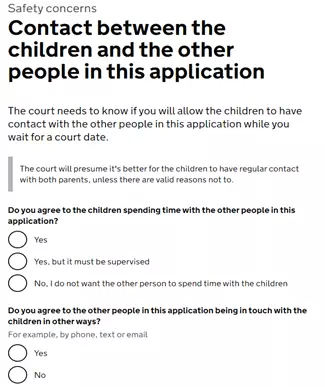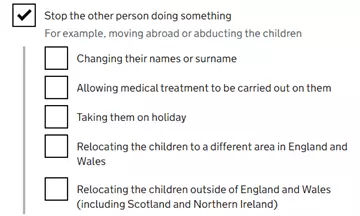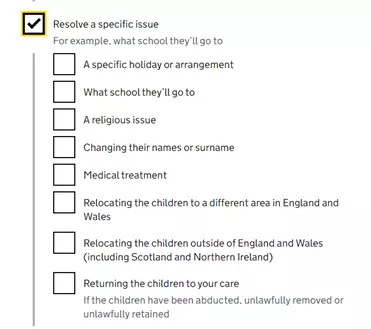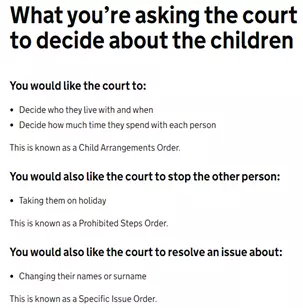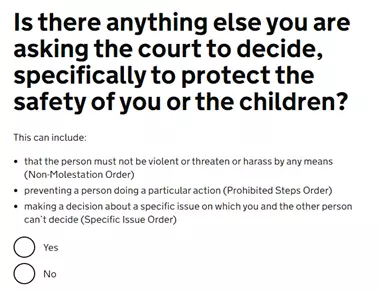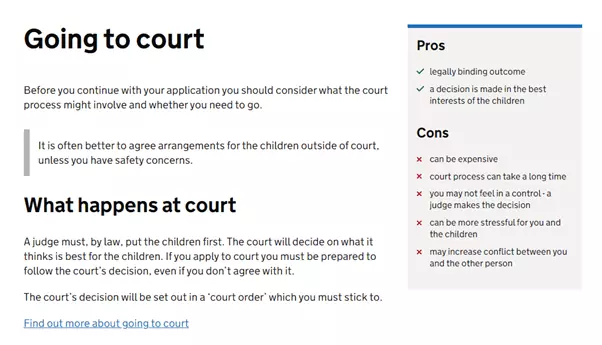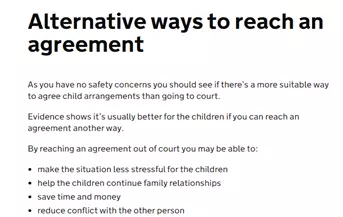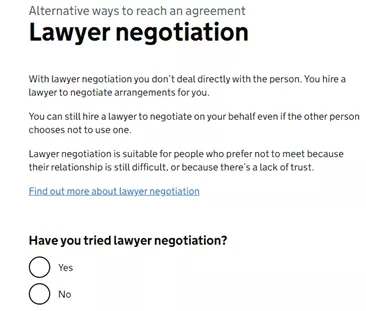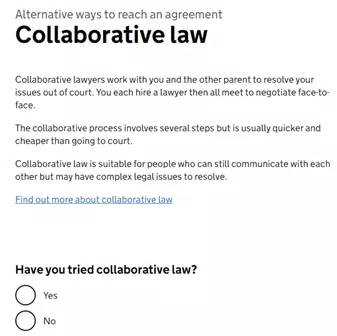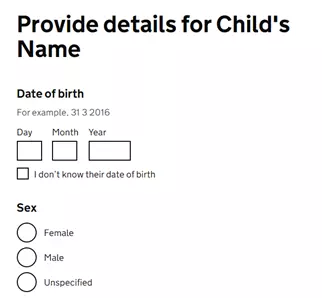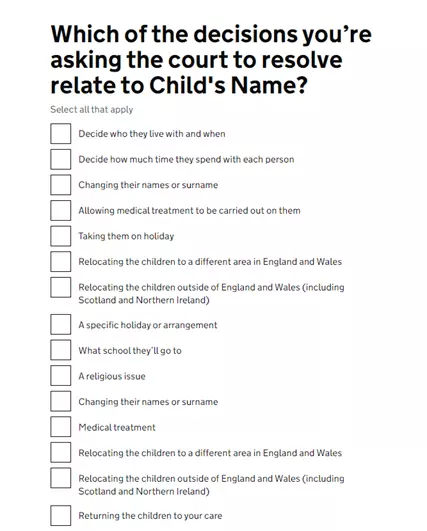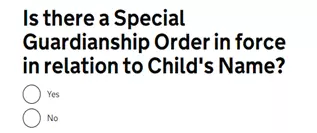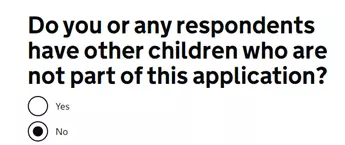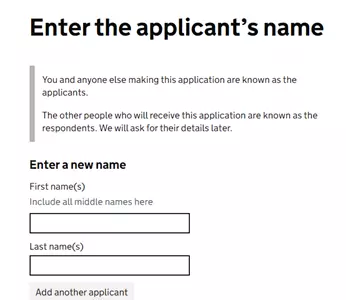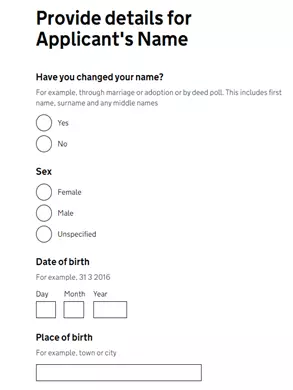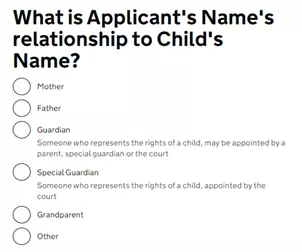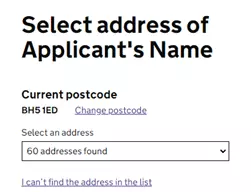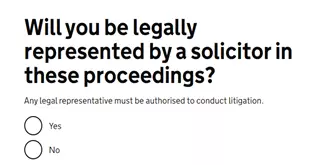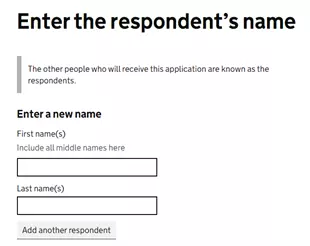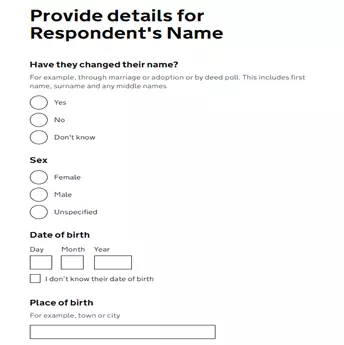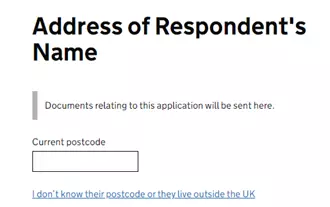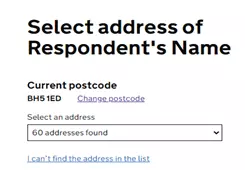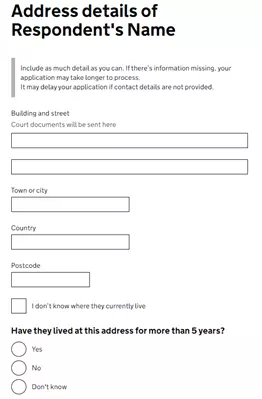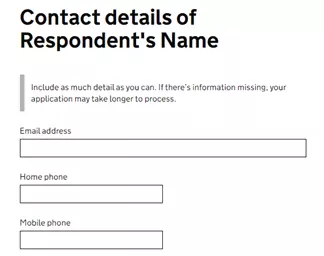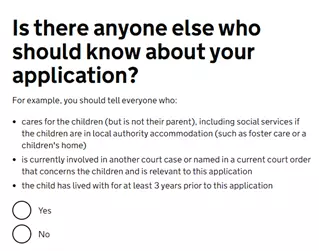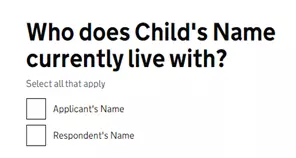draft guide to c100
The online application is quite different to the paper C100 form – with the online application you are asked a lot of safeguarding questions before you even get to the section asking why you are making the application. It can be frustrating at times but answer the safeguarding questions honestly so that the court have a good overview within the application of any risks or actual harm to either the children or yourself. Domestic abuse is not just physical abuse, it also covers a wide range of abusive behaviours, such as coercive control, financial control, gaslighting, emotional/psychological abuse, verbal abuse, sexual abuse, online harassment and stalking and “Honour”-based violence/abuse. Domestic abuse is suffered by both women and men, and children who either are abused directly or witness a parent’s abuse.
For help, support, and further information about domestic abuse you can contact:
Refuge (for female victims)
Men’s’ Advice Line (for male victims)
Refuge (for children)
What you will need to complete your application
When you first open the online application, you will see this screen which contains the details of the important information you will need to complete the application. Don’t worry if you don’t have all the information to hand as you can save your progress and return to the application when you have the required information.
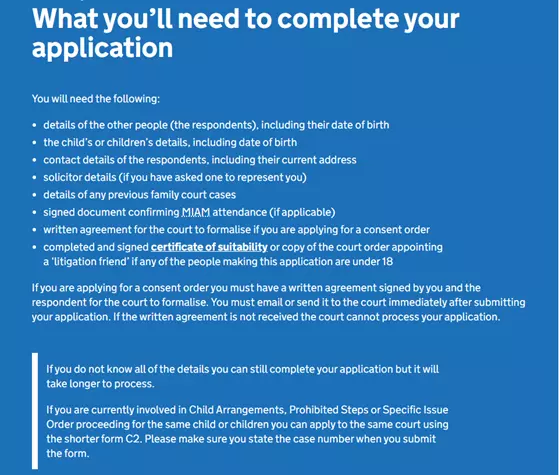
Saving your application and progress
At the bottom of most pages, you will see these two buttons. This allows you to save your progress either as you progress with the application, or to come back continue the application later.

To save your progress, you will need to create an account with Gov.UK. Once your account has been created, they will keep a draft of your application for 28 days, after which it will be deleted, so make sure you complete and submit your application well within that time frame. You will see this screen:
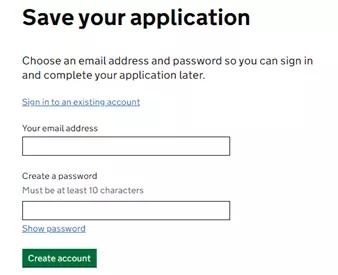
Where do your children live?
The first question you are asked is to provide the postcode of where the children currently live. If you do not know their address, you will need to apply for a Seek and Locate Order using From C4.

What kind of application do you want to make?
You are asked which order(s)you are applying for. In most cases, applicants will be applying for a Child Arrangements Order, a Specific Issue Order, or a Prohibited Steps Order. It is possible to apply for more than one of these orders within the same application.
If you are unsure which order(s) you need to apply for, you can read our guide here; or call our helpline on 01202 805020
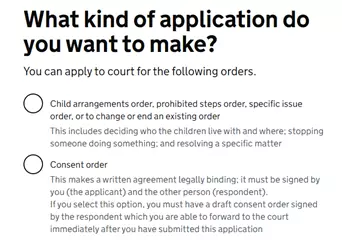
Select the appropriate response.
Are the children involved in any emergency protection, care or supervision proceedings?

Select the appropriate response.
The next set of questions is about attending mediation, and a MIAM (Mediation Assessment and Information Meeting). Parents must attend a MIAM before applying, unless they are exempt.
You can find out the list of exemptions here - About MIAM Exemptions.
Please provide the details of your MIAM and mediator used in the appropriate response boxes.
Attending a MIAM
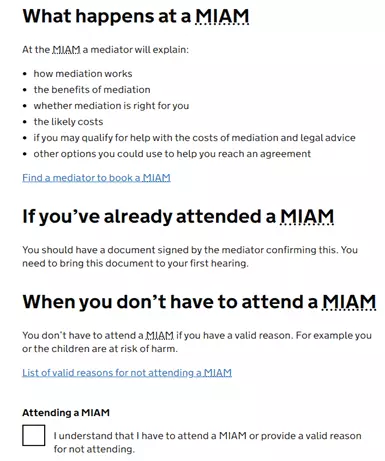
You will need to tick the box above, to show that you understand you must attend a MIAM or are exempt. You can find out the list of exemptions here - About MIAM Exemptions.
Details of Your MIAM
You will need to complete this section with the required information unless you are exempt from attending a MIAM. Don’t forget to keep your MIAM document safe so that you can take with you to court for your first hearing or submit it electronically if your hearing is to be held via telephone or video link.
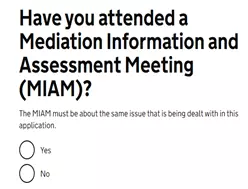
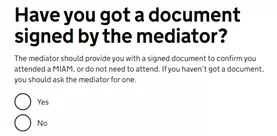



Safety Concerns for either yourself or your children
This next section is about any safety concerns you may have about your children. Safety concerns include threat/risk of abduction, physical/emotional/sexual or domestic abuse either from someone within their household or someone who associates with their household. Remember, this includes the risk of harm as well as actual harm.


If you are a victim of domestic abuse, have a domestic abuse or other injunction in place, or have good reason to believe your ex (or their family) may be a risk to your safety if they are made aware of your home address, you can select “YES” to keep your contact details private from the respondent. It is very important that you ensure that all future documents shared with the court and the respondent do not contain your contact details.
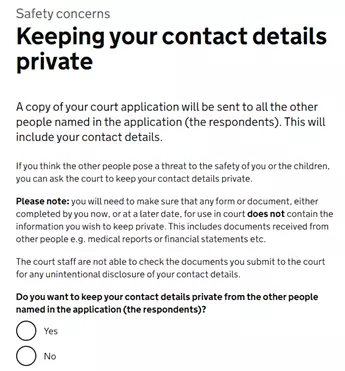
Are your children at risk of abduction?
If you believe the children are at risk from being taken out of the United Kingdom without your consent, or permission from the court, tick YES. You will then be asked further questions about the children and the risk of abduction. More advice and information can be found in our guide here, and at https://www.reunite.org/Abduction is unlawful removal of children under the age of 18 from the United Kingdom, without obtaining the consent of all those with Parental Responsibility or leave from the Court.
If your children are not at risk of abduction, tick no, and continue to the next question.
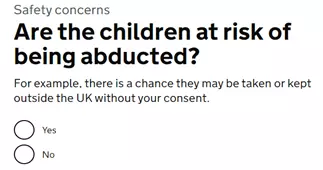
If you answer YES, you will then be asked another set of questions about the risk or actual abduction, including any previous attempts or abductions.
If you answer NO, you will be taken to further questions about the children’s risk of harm.
Further questions about the risk of abduction
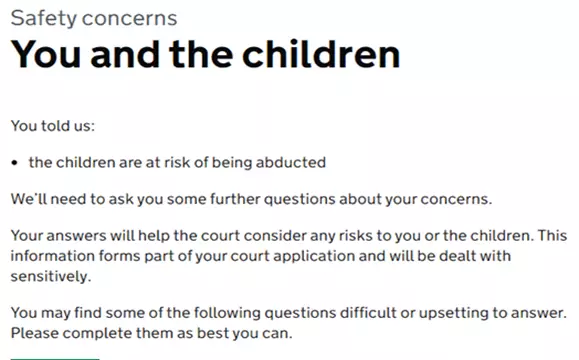
Answer these questions as best you can. If you have not already notified the police of the potential abduction, pause your application here while you contact the Police.


If you answer YES, you will be asked some questions about your children’s passports.
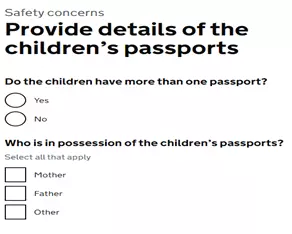

If your children have been previously abducted, or there have been previous threats of abduction (even for one night), answer YES, and you will then be asked a set of additional questions about this.
If the answer is NO, you will then be taken to the next section.

Provide as much detail as you can – dates, by whom, where, for how long, what actions you took, which agencies or police authorities were involved, if you sought any court orders to have the children returned. You can expand the text box by clicking and dragging the bottom right corner, where the three diagonal lines are.

Provide as much detail as you, including details of everyone with whom the children may be with, where they may be taken to and the other parent’s connections to that country. If you know where the children are after being taken, be as specific as you can; and state how long they have been there.
If the children haven’t been abducted but you believe there is a real risk they may be, provide details as to where you believe they are currently located and share any plans of the other parent that you may know of, such as intended leaving date/route/method of transport.
You can expand the text boxes by clicking and dragging the bottom right corner, where the three diagonal lines are.
{/slider-abduction}
Concerns about Drugs
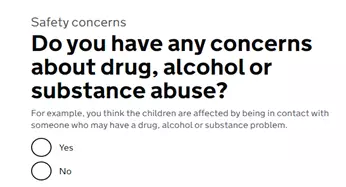
If you have any concerns about this type of abuse carried out by either their other parent, or someone who lives with/has regular contact with your children tick YES. IF you tick YES you will be then asked a number of other questions relating to your children’s safety.
If you tick NO, you will then be taken to a set of further questions about the children’s safety.
Domestic Abuse - Children

If you answer YES, you will be taken to additional questions about the abuse your children are experiencing or at risk of. You can find out more about the type of child abuse here - What is Child abuse? If you have answered NO, you will be taken to the next question.
If you have stated that your children are at risk of harm either immediately or in the future, you will now be asked some questions about this.
Further questions about the types of abuse your children may be suffering

If you answer YES, you will be asked further questions about this abuse on the next screen.

If you answer YES, you will be asked further questions about this abuse on the next screen.

If you answer YES, you will be asked further questions about this abuse on the next screen.

If you answer YES, you will be asked further questions about this abuse on the next screen.

If you answer YES, you will be asked further questions about this abuse on the next screen.

If you answer YES, you will be asked further questions about this abuse on the next screen.
Domestic Abuse - Yourself

If you answer YES, you will be asked further questions about the domestic abuse you are experiencing, have suffered, or are at risk of. IF you answer NO you will be taken to the next question.
Domestic abuse is not just physical abuse, it also covers a wide range of abusive behaviours, such as coercive control, financial control, gaslighting, emotional/psychological abuse, verbal abuse, sexual abuse, online harassment and stalking and “Honour”-based violence/abuse. Domestic abuse is suffered by both women and men. For help, support, and further information about domestic abuse you can contact:
Refuge (for female victims)
Men’s’ Advice Line (for male victims)
Further questions about the types of abuse you may be suffering
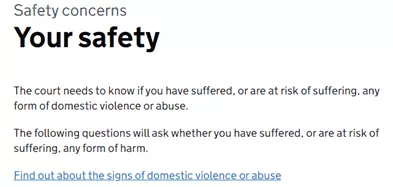
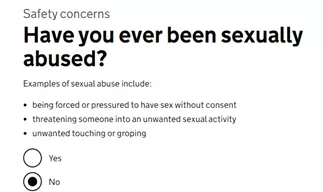
If you answer YES, you will be asked further questions about this abuse on the next screen.

If you answer YES, you will be asked further questions about this abuse on the next screen.

If you answer YES, you will be asked further questions about this abuse on the next screen.

If you answer YES, you will be asked further questions about this abuse on the next screen.
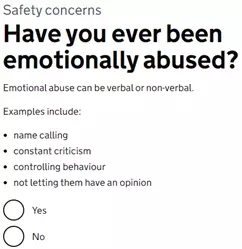
If you answer YES, you will be asked further questions about this abuse on the next screen.
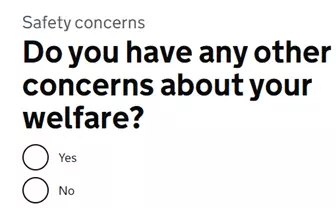
If you answer YES, you will be asked further questions about this abuse on the next screen.



